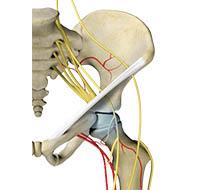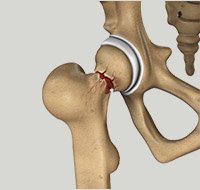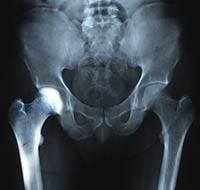Hip Conditions
Avascular Necrosis

Avascular necrosis, also called osteonecrosis, is a condition in which bone death occurs because of inadequate blood supply to it. Lack of blood flow may occur when there is a fracture in the bone or a joint dislocation that may damage nearby blood vessels.
Hip Arthritis

Osteoarthritis, also called degenerative joint disease, is the most common form of arthritis. It occurs most often in older people. This disease affects the tissue covering the ends of bones in a joint (cartilage). In a person with osteoarthritis, the cartilage becomes damaged and worn out causing pain, swelling, stiffness and restricted movement in the affected joint. Although osteoarthritis may affect various joints including hips, knees, hands, and spine, hip joint is most commonly affected.
Hip Bursitis

Hip bursitis is a painful condition caused by inflammation of a bursa in the hip. Bursae are fluid- filled sacs present in joints between bone and soft tissue to reduce friction and provide cushioning during movement.
Hip Fractures

The hip joint is a "ball and socket" joint. The "ball" is the head of the femur, or thighbone, and the "socket" is the cup shaped acetabulum. The joint surface is covered by a smooth articular surface that allows pain free movement in the joint.
Hip Injury

Chondral injuries can result from various hip conditions such as labral tears, loose bodies, posterior dislocation, slipped capital femoral epiphysis (SCFE), dysplasia, osteonecrosis, and degenerative arthritis.
Hip Osteoporosis

Osteoporosis means pores or holes in the bone, resulting in decreased density and bone strength making them more prone to fracture. Osteoporosis can affect all bones of your body however the commonly affected areas are spine, wrist, and hip. Osteoporosis can be prevented in a majority of cases, simply by following a healthy lifestyle to develop strong bones
Hip Pain

Hip pain, one of the common symptoms that patients complain of, may not always be felt precisely over the hip joint. Pain may be felt in and around the hip joint and the cause for pain is multifactorial. The exact position of your hip pain suggests the probable cause or underlying condition causing pain.
